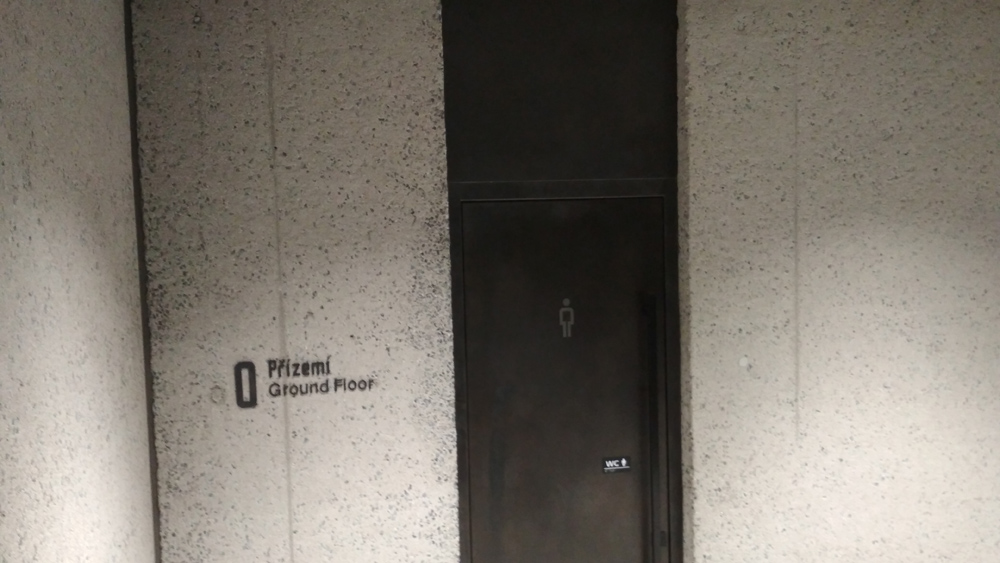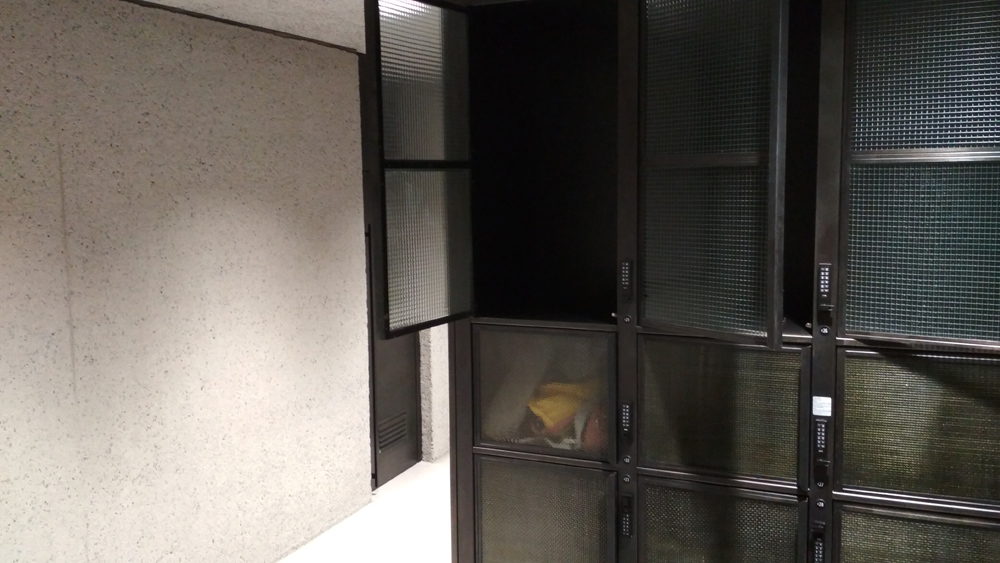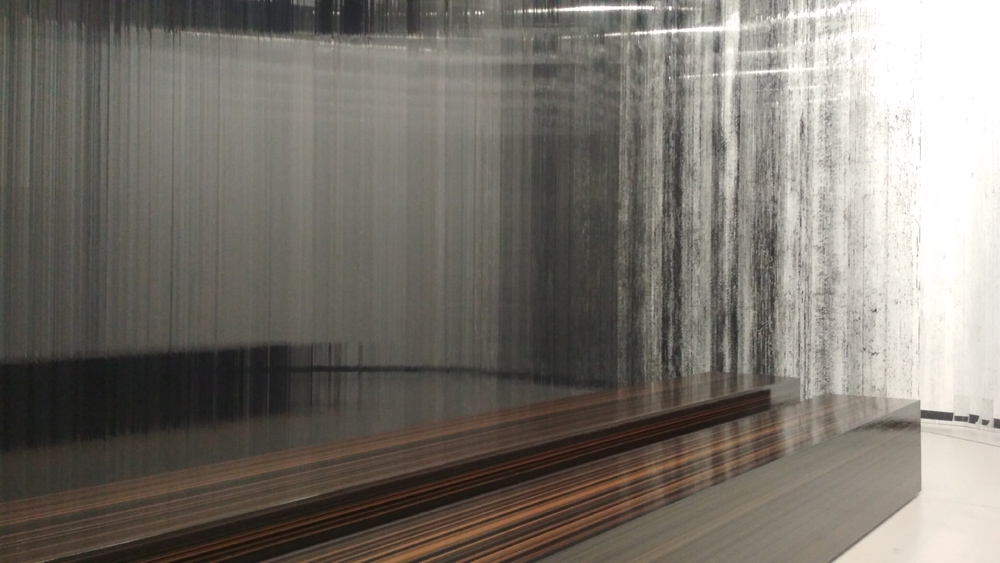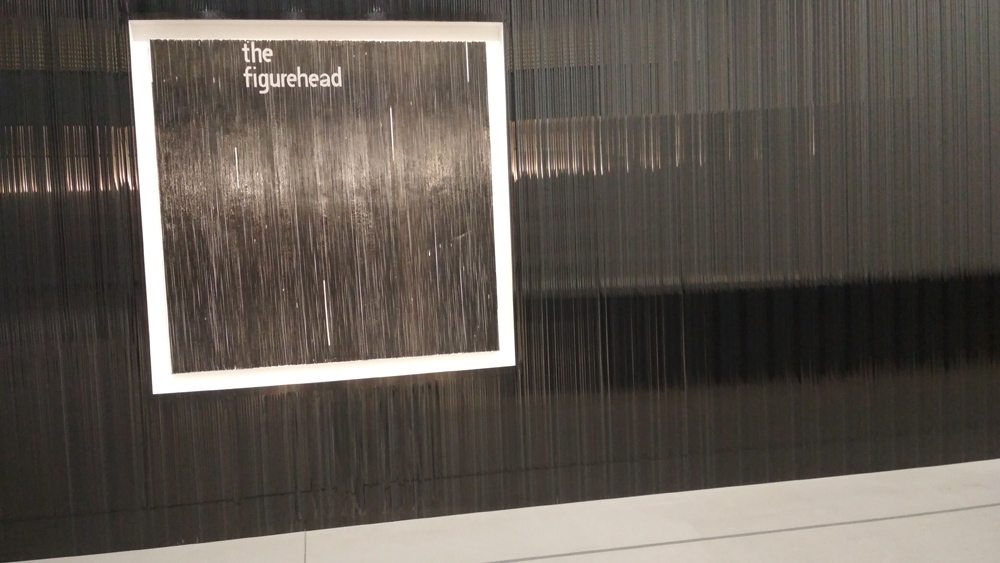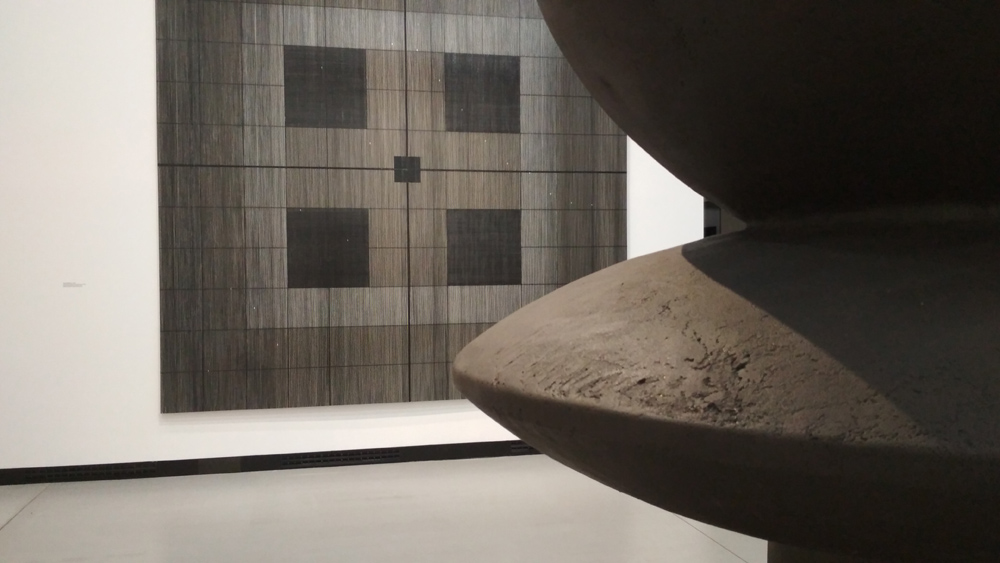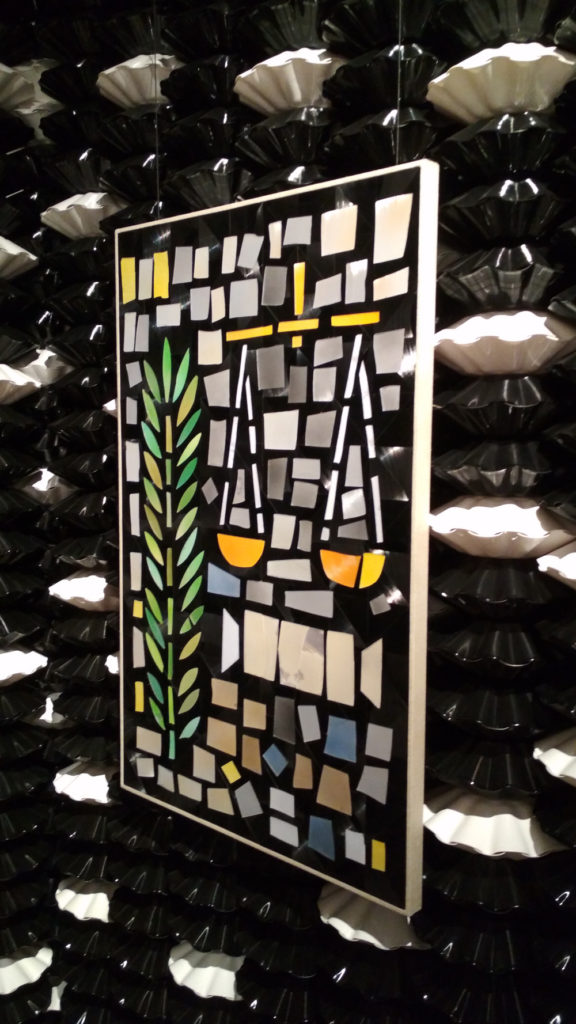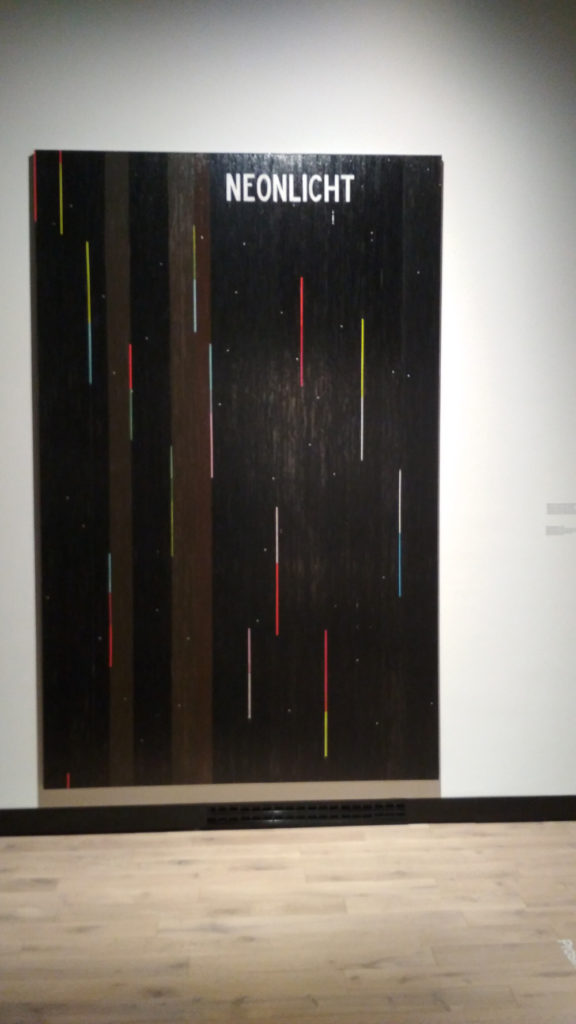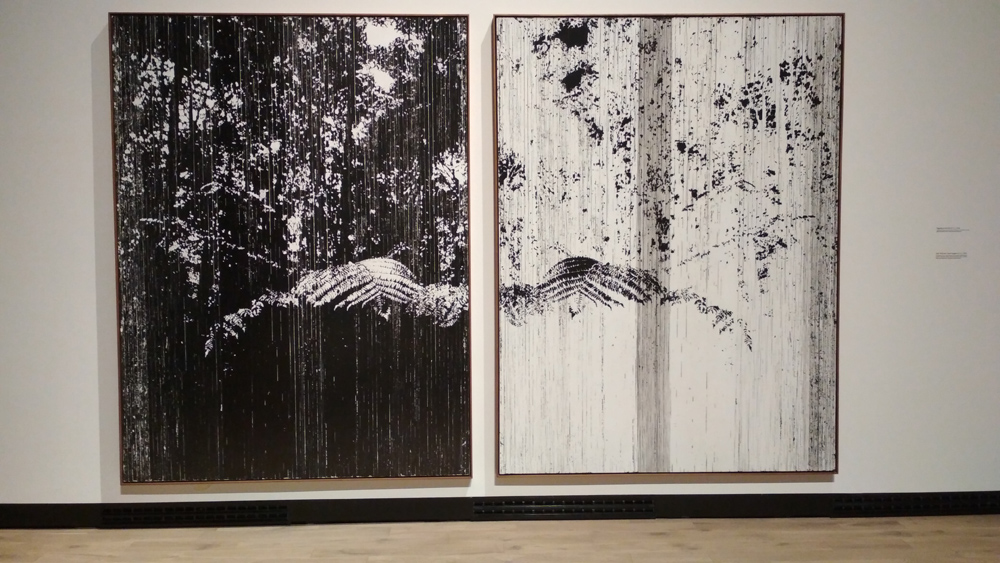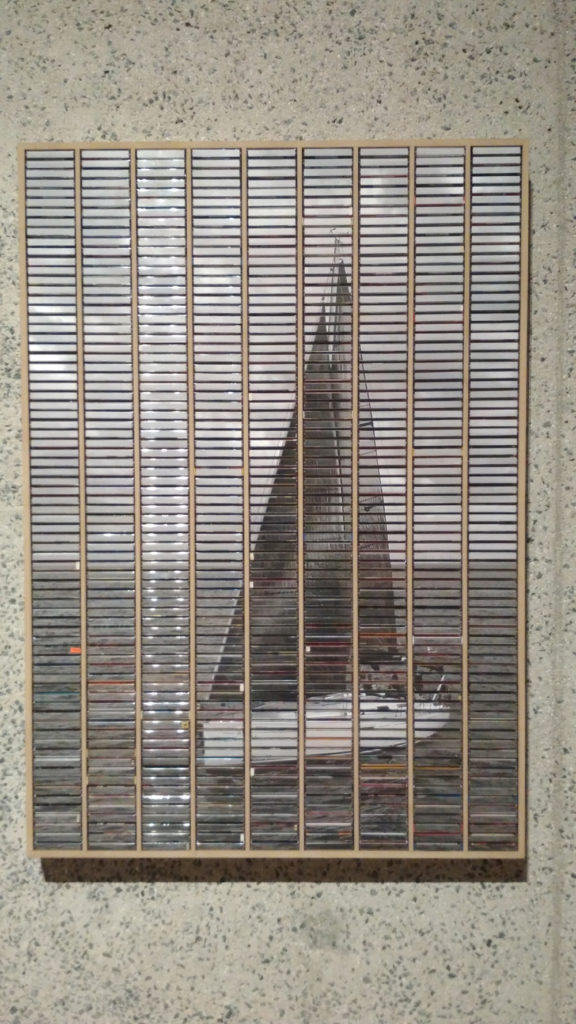Prague, Sep 29, 2022 – Feb 13, 2023, https://www.kunsthallepraha.org
Kunsthalle Praha is a new institution in the city. It is private and was founded by Petr Pudil and his wife Pavlina. Pudil is one of the Czech businesspeople, who succeeded amassing a fortune during the rather murky and lawless times of the 1990s political and economic “transformation” of the Czech Republic. Now he is an art collector. And his wife too.
The current show is the second large endeavour after the first one dedicated to kinetic art.
The Kunsthalle building is a newly refurbished and adapted old construction finished in polished grey concrete and black metal in a rather “cool” industrial loft design style. Different levels are intertwined allowing for interesting views from internal balconies and staircases. Everything is rounded up with a museum shop and café.
Gregor Hildebrandt is a German artist and the partner of another German artist, Alicja Kwade. His main medium are classic recording media: vinyl records and magnetic tapes of all kinds. He uses them as a raw material to create his installations. The sonic content is present in the titles of the works, but there is no sound itself present in his works. The naming and conceptual background reeks with nostalgia. He is one of those artists who defined their turf by the materials they are using and now he is on a way producing constant variations of vinyl and tape collages, paintings, installations etc.
I could not help but to think about the dozens of studio interns who work 9 to 5 on assembling the thousands of magnetic tapes and vinyl record pieces into the large size artworks designed by the mastermind. This kind of art is made possible thanks to the Berlin art ecosystem and the possibility to source a high number of inexpensive but skilled labour. That of course leads to another question, if these works were at all produced in Berlin and not in an art factory in Shenzhen. Artworks containing high numbers of small parts arranged in repetitive patterns somehow make me always think about this.
They grey and black tones of the museum interior design were quite a good match for the monochrome nature of Hildebrandts work. So much that I sometimes had to wonder where the interior design stops and the fine art starts. In a way, I consider this as a sign that the artists really engaged with the space and tried to make the most out of it. On the other hand, the artwork felt a bit repetitive and boring to me. The themes represented in the titles and content of the work were all over the place and it was only the medium of expression that held the work together. There was also a lot of circular movement and idea recycling going on, e.g. when a mosaic made from records and the leftover pieces where both displayed. Or when the positive and a negative of a work created in one go where both displayed next to each other. This gave it a bit of a high-end shopping mall interior design feel, making sure an abundance of products and variations thereof for every taste and budget is present.
On the upper floor, there was a group show of digital artworks titled “Invisible Forces”. Nicely setup up high resolution digital signage screens and projections made me feel a bit like in the showroom of a LCD screen manufacturer with those default colorful CGI images that are used to illustrate the high quality of the screens. Those default imagery is very often inspired by nature and simulations thereof – which was also the topic of this exhibition. It was beautiful. It was pleasant. And it was accompanied by an equally pleasant ambient soundtrack. What else to say?

Martin Houra 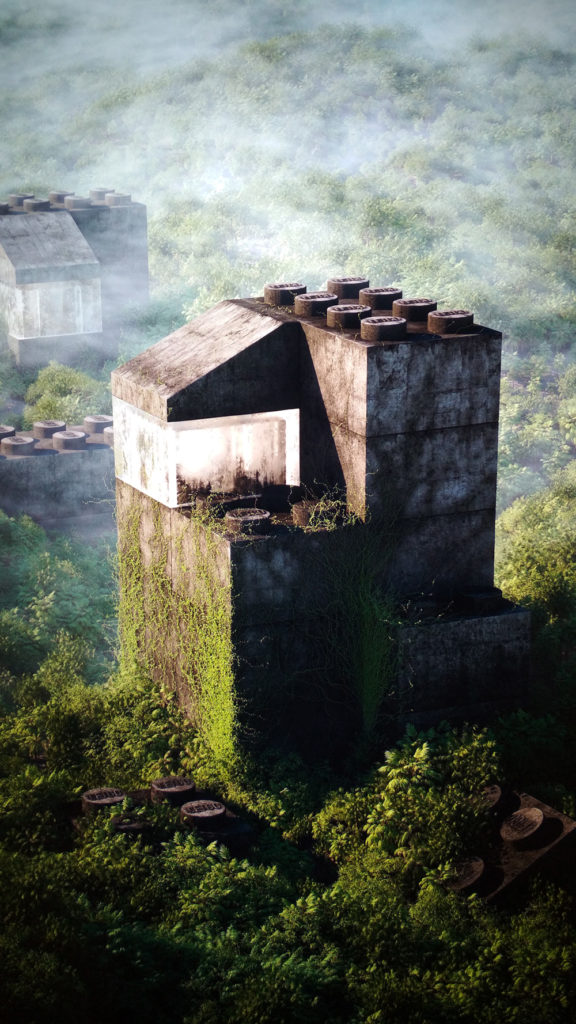
Filip Hodas 
Ondřej Zunka & Zünc Studio 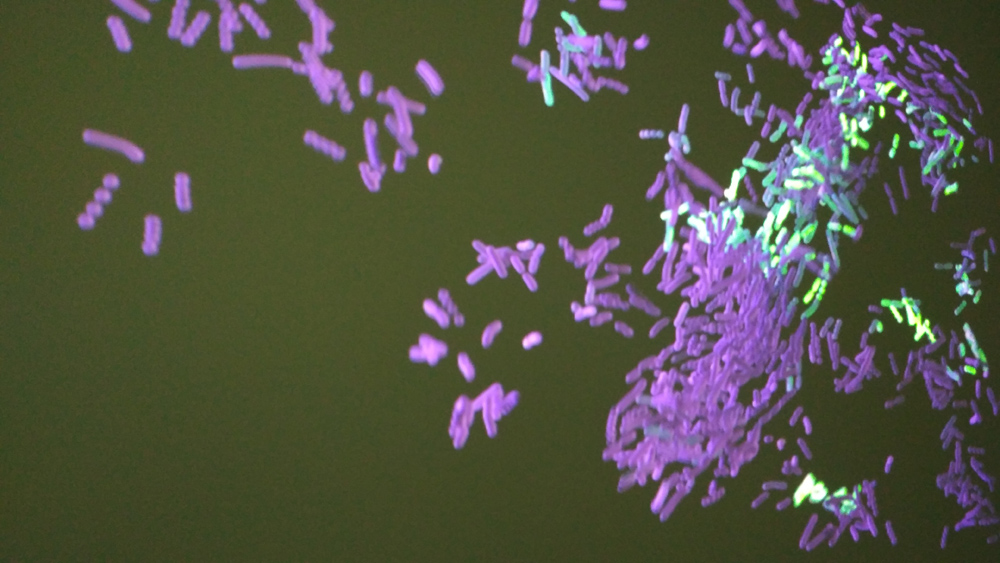
Ondřej Zunka & Zünc Studio 
Ondřej Zunka & Zünc Studio 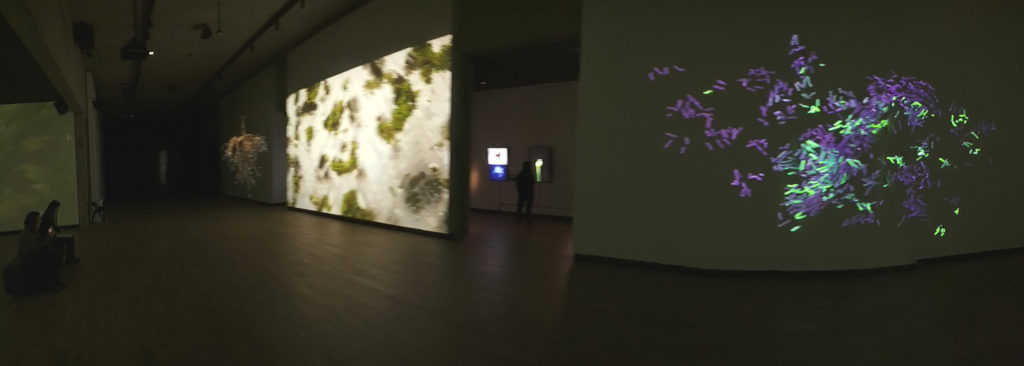
Ondřej Zunka & Zünc Studio
On the very top floor, in a kind of tower, just under the roof there was a surprise in the form of a meditation space. A crater, designed by Tomas Moravec.

Overall it was a nice time spend. Everything was neat. It was good to see Hildebrandt and he did his best. But I had doubts about the sustainability (artistic, not ecological) of his art. The nature-themed digital art show was pleasant and it formed a nice counterpart to the rather bleak black and whiteness of the rest.
I wonder about the future of this institution. On my visit I could feel that this is a collector’s museum. The concerns are aesthetic and image driven. In the invisible background probably also art market driven. In my mind I started to compare it with DOX, which is also private, but whose concerns are more focused on sociopolitical and educational topics. An Prague institution similar to Kunsthalle would probably be Gallery Rudolfinum, located not too far on the other side of the Moldau River. I am glad to see Prague has all of these institutions, each with their own purpose. Kunsthalle Praha is still in its growing up phase and I am curious about its future development.
